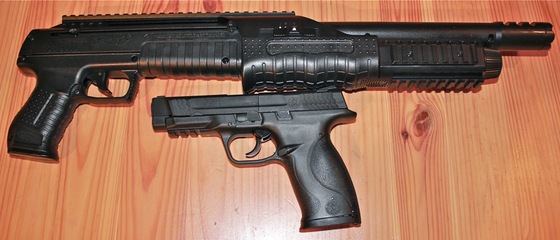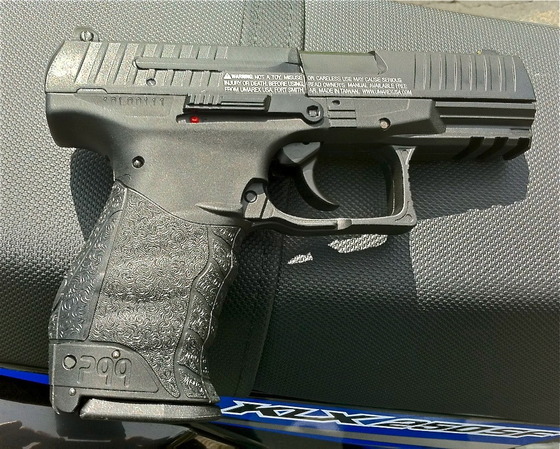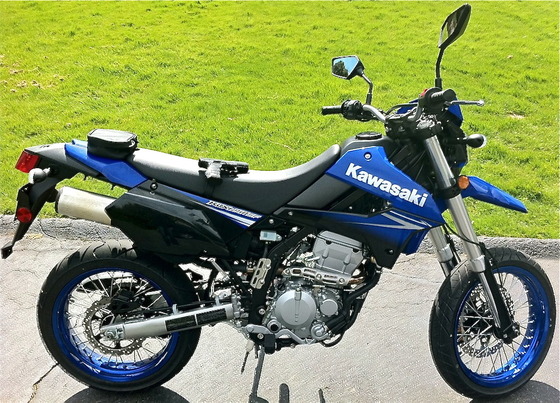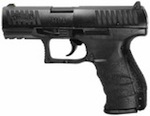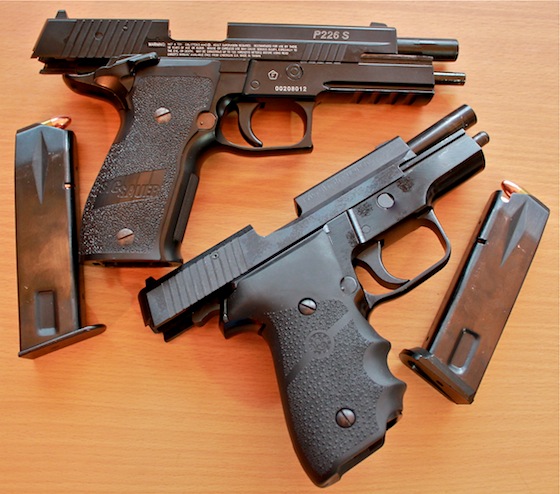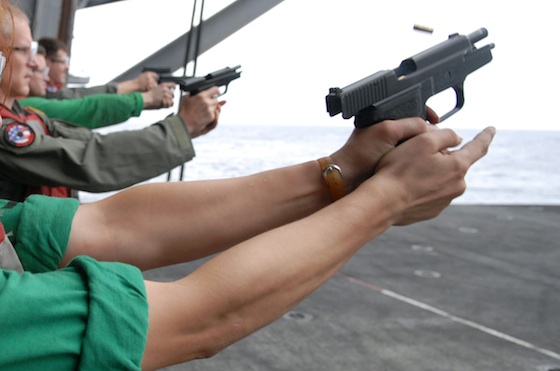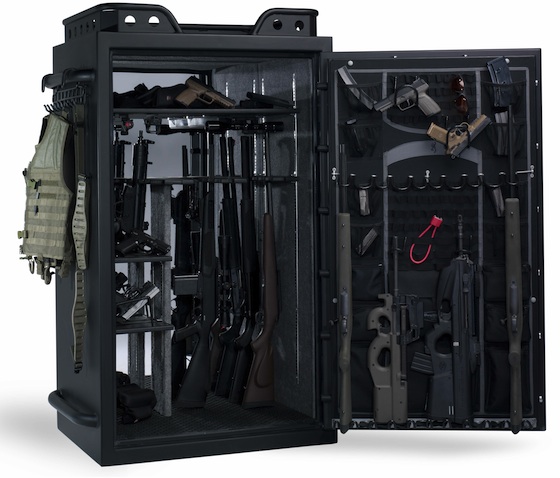Cross Border Airgun Trip Almost Lands Me in Jail
OK, right off the bat the title for this post is a bit dramatic but if it gets me a few extra hits why not!
So I went south across the boarder to pickup a few air guns supplied to me for review by UmarexUSA. Umarex is not comfortable sending airguns to me directly in Canada so I have Umarex send it to a place close to the boarder in Blaine that ships and receives items.
Todays trip I was bringing back a couple air guns - the Umarex SG9000 BB Shotgun and the Umarex S&W M&P 45. Both of which shoot under 500 fps and have an energy value of less then 5.7 Joules which classifies them as Un-Controlled Firearms in Canada. And what does this mean? The short of it is that in Canada we are not allowed "Replica guns" and so there are some Police and Border Guards that believe any airgun that looks like a real gun is a "replica gun" and so it is illegal to own or import into Canada.
It is kind of complicated but we have provision in our Canadian Firearms Act that addresses this issue but as I found out today, not all Border Guards are aware of this. Now I do not want to bad-mouth our Canadian Border Guards, for the most part they are very fair and they are just doing their job to the best of their ability.
Here is a link to the entire Memorandum that addresses this issue if you want to read it all (reference: CBSA Memorandum D19-13-2 pages 8-16)
Here are the parts that are important to my story!
Replica Firearm:
- A device that resembles a real firearm but cannot fire a projectile, or its projectile cannot cause serious bodily harm. Replica firearms are prohibited devices (most AEG's and GBB pistols). Prohibited devices are not the same things as prohibited firearms.
Firearm:
- A barrelled device firing a projectile able to cause serious bodily harm. For CBSA's purpose, all firearms are separated into either controlled firearms, or un-controlled firearms.
Controlled:
- A firearm with muzzle velocity above 500 FPS AND muzzle energy above 5.7 Joules. Serial number, registration, Firearm Possession and Acquisition License (PAL) are required to import / purchase and possess any controlled firearms
Un-Controlled:
- A firearm with muzzle velocity below 500 FPS OR muzzle energy below 5.7 Joules. There is no serial number, registration, license or permit required to import / purchase / own such un-controlled firearms
Exception:
- The following goods generally do not meet the definition of prohibited weapon, and thus do not fall under tariff item 9898.00.00. Their misuse may nonetheless be punishable under other laws:
- (a) an air gun or BB/pellet gun that resembles a real make and model of a firearm may not be a replica firearm if it is an “uncontrolled” firearm (see “Uncontrolled” firearms).
Sorry to make you read that but it is imperative to the rest of my story so that you understand that a Metal BB or Pellet gun that shoots under 500 fps with an energy level below 5.7 Joules is in fact an Un-Controlled Firearm or a barrelled device firing a projectile able to cause serious bodily harm and can in fact resemble a real make or model of firearm.
Unfortunately I did not print off Memorandom D19-13-2 (Note to self... Print it off before heading across the boarder to pickup Air guns!). Now last time I had no problems at all bringing my Umarex PPQ across the border, I guess my Border Guard that time was on the up and up?
Well this time I got sent right into the main building for "Question and Answer Time".
They took a look at the air guns and came back and said, "I can't let you keep these airguns because they are Replica guns."
So I said, "They are not Replicas, they are Un-Contorlled Firearms making them in fact not a Replica but an actual Firearm.
So they said, "Our documentation says that any airgun that looks like a Firearm, is a Replica and we do not classify airguns as Firearms".
So I said, "So all the places in Canada selling Replica Airguns are doing so illegally and if so, how are they getting all these guns past you guys?"
We went back and forth on this for about a half an hour and I was not disrespectful to the Border Guard and he also took the time to hear me out. After he realized that I was more then just your average uninformed tourist returning from vacation with an airgun keepsake, he went into the back and returned to tell me he had good news. "You can keep your air guns" he said! He had spoken with another Border Guard who knew more about the Airgun - Replica laws and was set straight on the confusing matter.
Yes it was a bit stressful at the time but I still have all my faith in our Border Guards, they where not in any way rude to me, but keep in mind I was not disrespectful to them either. It kind of makes you wonder how many fully legal airguns get confiscated at the border and more then likely destroyed?
So anyways - the good news is I have two more Umarex products that I will be reviewing very soon. So make sure to checkout the Umarex SG9000 BB Shotgun and the Umarex S&W M&P 45 when I do their upcoming reviews.




